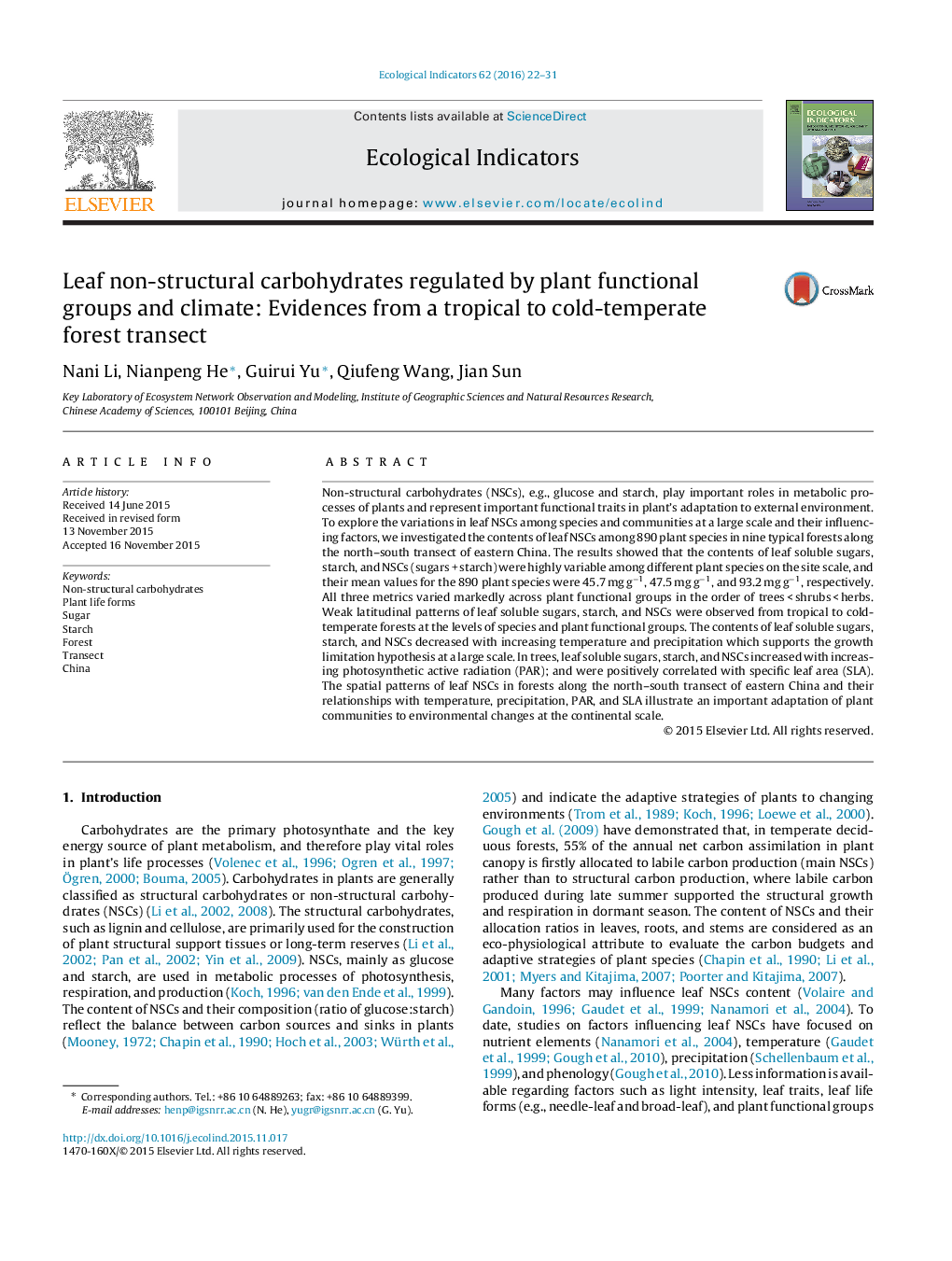| Article ID | Journal | Published Year | Pages | File Type |
|---|---|---|---|---|
| 6293913 | Ecological Indicators | 2016 | 10 Pages |
Abstract
Non-structural carbohydrates (NSCs), e.g., glucose and starch, play important roles in metabolic processes of plants and represent important functional traits in plant's adaptation to external environment. To explore the variations in leaf NSCs among species and communities at a large scale and their influencing factors, we investigated the contents of leaf NSCs among 890 plant species in nine typical forests along the north-south transect of eastern China. The results showed that the contents of leaf soluble sugars, starch, and NSCs (sugars + starch) were highly variable among different plant species on the site scale, and their mean values for the 890 plant species were 45.7 mg gâ1, 47.5 mg gâ1, and 93.2 mg gâ1, respectively. All three metrics varied markedly across plant functional groups in the order of trees < shrubs < herbs. Weak latitudinal patterns of leaf soluble sugars, starch, and NSCs were observed from tropical to cold-temperate forests at the levels of species and plant functional groups. The contents of leaf soluble sugars, starch, and NSCs decreased with increasing temperature and precipitation which supports the growth limitation hypothesis at a large scale. In trees, leaf soluble sugars, starch, and NSCs increased with increasing photosynthetic active radiation (PAR); and were positively correlated with specific leaf area (SLA). The spatial patterns of leaf NSCs in forests along the north-south transect of eastern China and their relationships with temperature, precipitation, PAR, and SLA illustrate an important adaptation of plant communities to environmental changes at the continental scale.
Related Topics
Life Sciences
Agricultural and Biological Sciences
Ecology, Evolution, Behavior and Systematics
Authors
Nani Li, Nianpeng He, Guirui Yu, Qiufeng Wang, Jian Sun,
